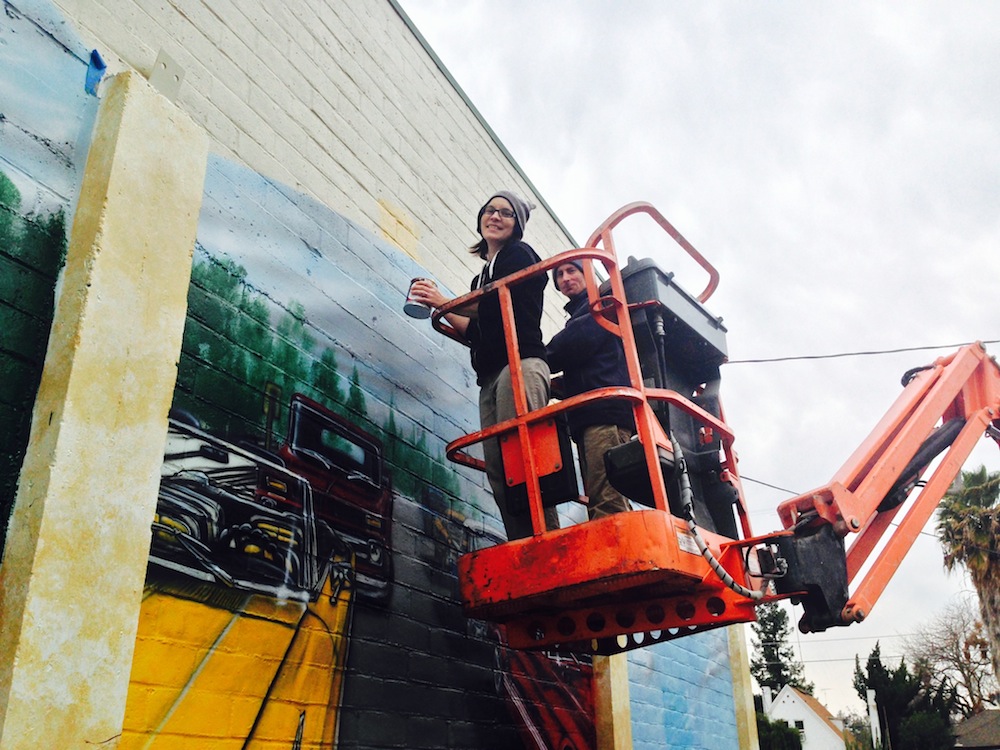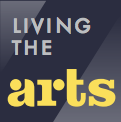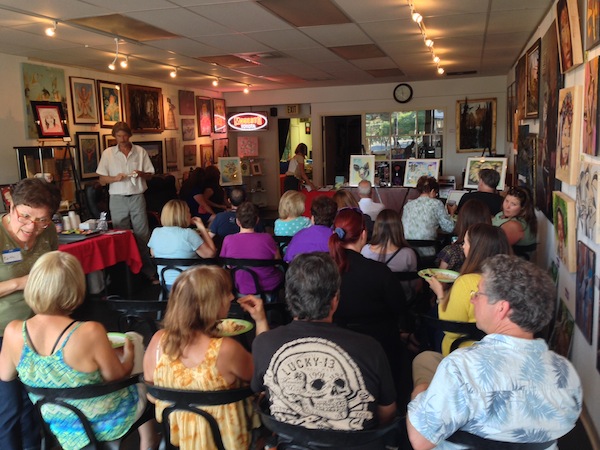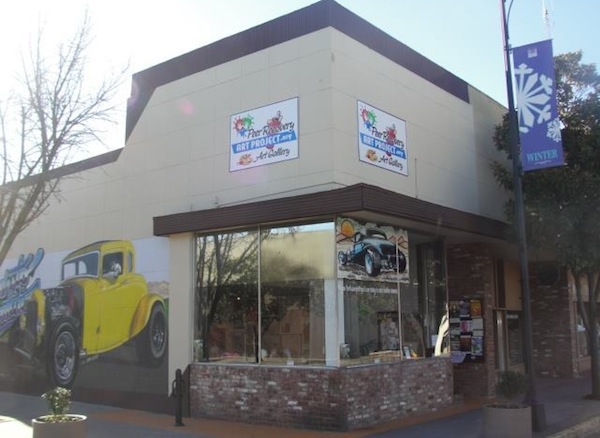
I don’t care for labels, but I’m a Californian who went around the country working carnivals before schizophrenia dug its hooks into me. After 10 years, some of them wandering the streets of Modesto, I began my recovery as a volunteer at a community alcohol treatment drop-in center. There, I learned how important it was to prevent people in treatment from being isolated. This has become the driving force of my career—and has also improved my own health.

Today, I’m back on the streets of Modesto, as CEO of the nonprofit Peer Recovery Art Project. Through our downtown gallery, events, and outreach programs, our collaborative empowers mental health consumers—people who have had challenges with mental health—to take part in the arts in various ways. By creating art, putting on arts events, and using art projects to enhance public spaces, they improve their own health and connect to the community.
Our goal is to demolish old attitudes about the roles that mental health consumers can play in the places they live. We are fighting against stigma, and tradition, that say we must isolate mental health consumers. Today, while many mental health groups talk about the importance of people in recovery belonging, they end up talking mostly about caseloads, funding cuts, crisis, and paperwork. Our approach is different; we jump right into community.
We do this by combining two missions into one: supporting people in recovery, and revitalizing public spaces, especially the downtown core of Modesto’s business district. People in recovery do the work of revitalizing these spaces, and through their work pose the question: “Who is responsible for taking care of our community?” Our answer: “Everybody, including us.”
The Peer Recovery Art Project was born from a class I facilitated called Peer-to-Peer, a nationwide education program for people with mental health challenges developed through the National Alliance on Mental Illness (NAMI). After the class ended, a few of us wanted to continue to support one another as well as others, but we didn’t want to be limited to traditional mental health settings, such as clinical offices or the group rooms of public mental health departments. One idea I offered was to participate in community-based projects that were open to all, with no labeling of certain people as mentally ill.
We started informally in 2007 by participating in the Modesto Blues, a major music festival, and in a community walk that raised funds for NAMI. It was hard to find money at first. I was amazed by the amount of funding spent on “art therapists” inside institutions—and how little was spent in the local community to find creative outlets for people who otherwise could wind up in jails or hospitals. But we eventually raised the money we needed, thanks to a number of local individuals and businesses and a big assist from Wells Fargo.
We’re driven by the idea that music and art, because they are so widely appreciated, are the best way for people to integrate into a community. I think that’s because art and music are accessible and familiar, and so they inspire feelings of security rather than fear. We also know that art stimulates the imagination and thinking of all people; those who create come to see themselves differently. For people who are mental health consumers and for people who aren’t, art becomes a way of expressing hard-to-express things, and developing relationships. Art in this way counters isolation.
Over the years, we evolved from an informal “street team” into an art collaborative in which some of the contributing artists may have experience as mental health consumers. Sometimes their art reflects that experience; sometimes it doesn’t. Either way, we seek to nurture and respect their work, in part by publishing a monthly newsletter. The artists do all the work of creating, connecting, putting on events, and selling their work. Our Arts for Freedom Art Gallery offers “open door” access to all and a place for local artists wishing to show their work. We tell anyone pursuing their own artistic journey that we are here to serve them—and the community. We’ve grown from 50 artists to close to 400 artists, and another 400 people have participated by volunteering.
Like any art collaborative, we have showings. We host the Art Show Wine Tasting area at the McHenry Village Shopping Center each year to give an opportunity for artists to connect to art lovers. We show art and have our musicians play at the Day of Hope, an annual gathering in Stanislaus County for mental health consumers, family members, educators, and service providers. We bring art classes and live music to local schools. We help our artists with framing and with the set-up for our shows. We promote our artists on Facebook and manage sales inside our community gallery. James Devlin, a painter and Afghan war veteran who came to us as a volunteer and later became an employee, has now shown his art throughout the state.
Among our tools for bringing new artists to Peer Recovery is a step van—a 1974 International Grumman Olson (similar to what FedEx drivers use)—that we purchased with no idea how we would be able to afford to operate and insure it. But we knew we needed to be mobile, to bring people into our collaborative who are isolated or live in different parts of the county. So we painted a mural on the outside (showing a series of four faces, which depict a blending of cultures) and set up our “Traveling Art Gallery” on the inside. The van goes all around Stanislaus County, often parking outside events.
We continue to grow in our reach and our ambition. We’ve started a new speakers’ bureau through which our members give talks about the arts and ending the stigma of mental illness. We also have a new international arts exhibition, which travels around the area; it debuted in April at Maxx Value Foods on Modesto’s west side.
The only requirement for participation in Peer Recovery is geographic. Our program is open to anyone from Stanislaus County who wants to participate without regard to race, ethnicity, age, gender, or sexual orientation. We have many community partners who do outreach or contract with us to provide arts in some form. The Stanislaus County Office of Education uses our gallery as a summer youth work experience destination. Downtown Modesto business owners recruit staff from our volunteer pool and request specialty support services for events.
I have bad days like anyone else, but I find that this work—and the possibility that we can do even more—inspires me. In the near future, we want to develop new programming to improve people’s social skills and help them work with the public in retail settings. We’re also trying to figure out creative ways of using peer-to-peer mentoring to advance the careers of our artists. Beverly Fabrics here in Modesto just offered to discount and provide art supplies for our projects. Project YES (Youth Employment Services) and the county office of education have agreed to bring our International Arts Exhibition to young people on their campuses. There’s no end to how deeply arts can connect you to the community.






Send A Letter To the Editors